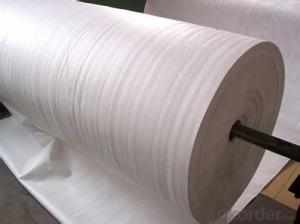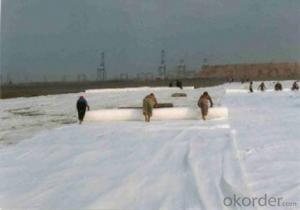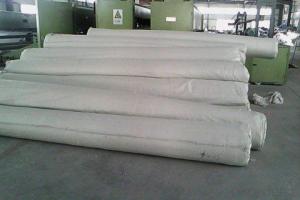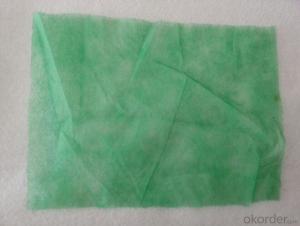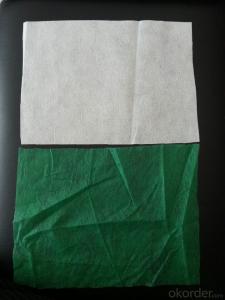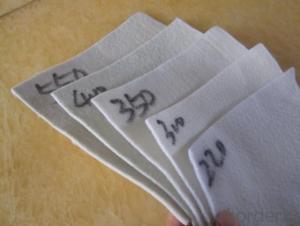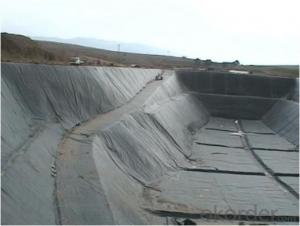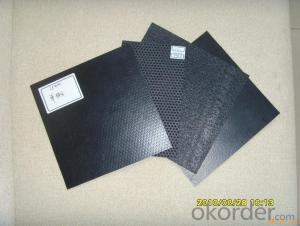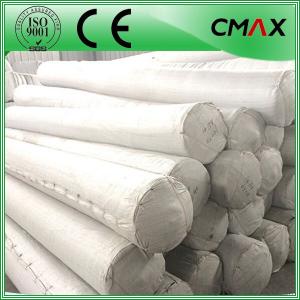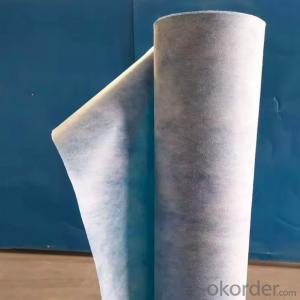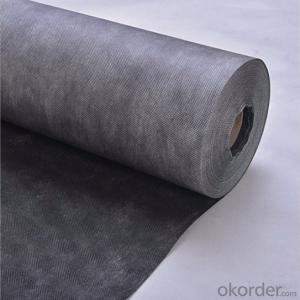Staple fibers needle punched non woven geotextile
- Loading Port:
- Qingdao
- Payment Terms:
- TT or LC
- Min Order Qty:
- 1000 g/m²
- Supply Capability:
- 100000 g/m²/month
OKorder Service Pledge
OKorder Financial Service
You Might Also Like
Staple fibers needle punched non woven geotextile
Introduction:
Staple fibers needle punched non woven geotextile is made of PP or PET staple fibers on carding cross- laying equipment and needle punched equipment.
Features: It owns the advantages of acid and alkali resistance, erosion resistance, aging resistance, large strength, stable size, good filtrability etc.
Application: Mainly applied in water conservancy, road and railway for strengthening, separation, reversed filter and drainage of projects
Specification:100g~800g
Width:2m~6m
Properties of Staple fibers needle punched non woven geotextile
Item (g/m2) | 100 | 150 | 200 | 250 | 300 | 350 | 400 | 450 | 500 | 600 | 800 | Note |
Mass error in unit area (%) | -8 | -8 | -8 | -8 | -7 | -7 | -7 | -7 | -6 | -6 | -6 | |
Thickness (mm) ≥ | 0.9 | 1.3 | 1.7 | 2.1 | 2.4 | 2.7 | 3.0 | 3.3 | 3.6 | 4.1 | 5.0 | |
Error of width (%) | -0.5 | |||||||||||
Breaking strength (KN/m)≥ | 2.5 | 4.5 | 6.5 | 8.0 | 9.5 | 11.0 | 12.5 | 14.0 | 16.0 | 19.0 | 25.0 | MD/CD |
Elongation at break | 25~100% | |||||||||||
CBR puncture resistance (KN)≥ | 0.3 | 0.6 | 0.9 | 1.2 | 1.5 | 1.8 | 2.1 | 2.4 | 2.7 | 3.2 | 4.0 | |
Equivalent Pore size O90( O95) | 0.07~0.2 mm | |||||||||||
Vertical permeability coefficient | K×(10-4~10-3)cm/s | K=1.0-9.9 | ||||||||||
Tearing strength (KN)≥ | 0.08 | 0.12 | 0.16 | 0.20 | 0.24 | 0.28 | 0.33 | 0.38 | 0.42 | 0.46 | 0.60 | MD/CD |
Images of non woven geotextile
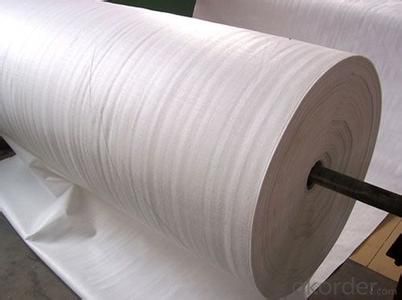
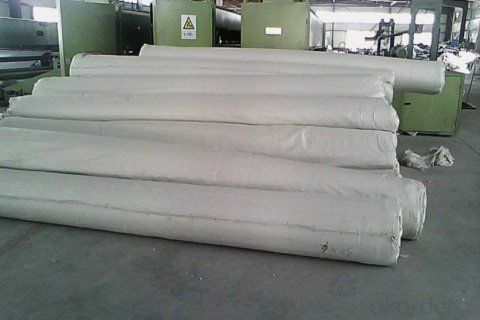
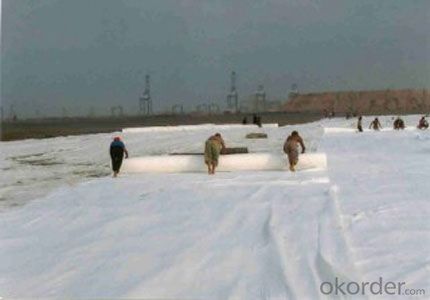
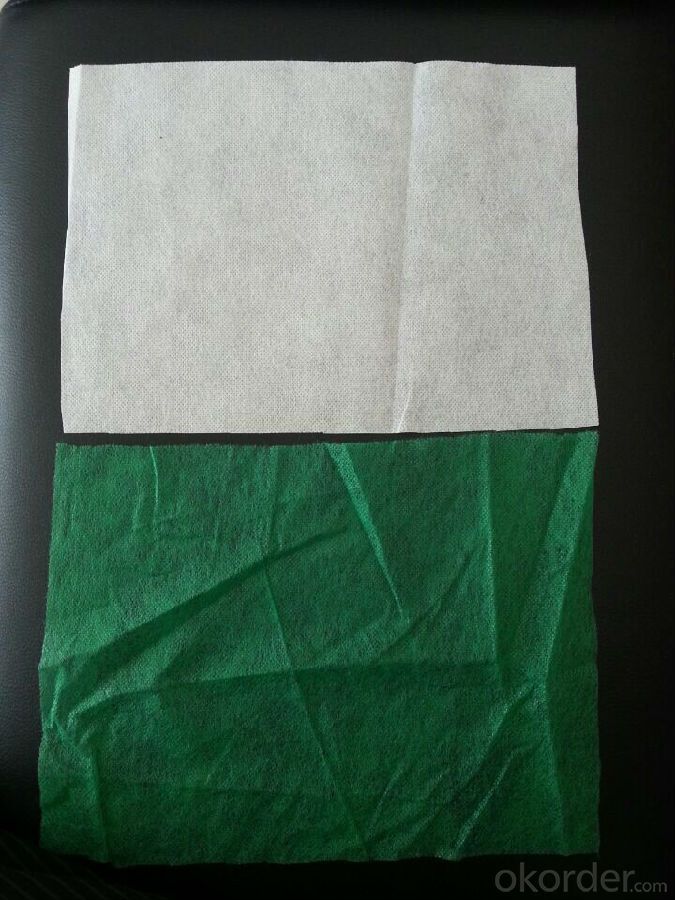
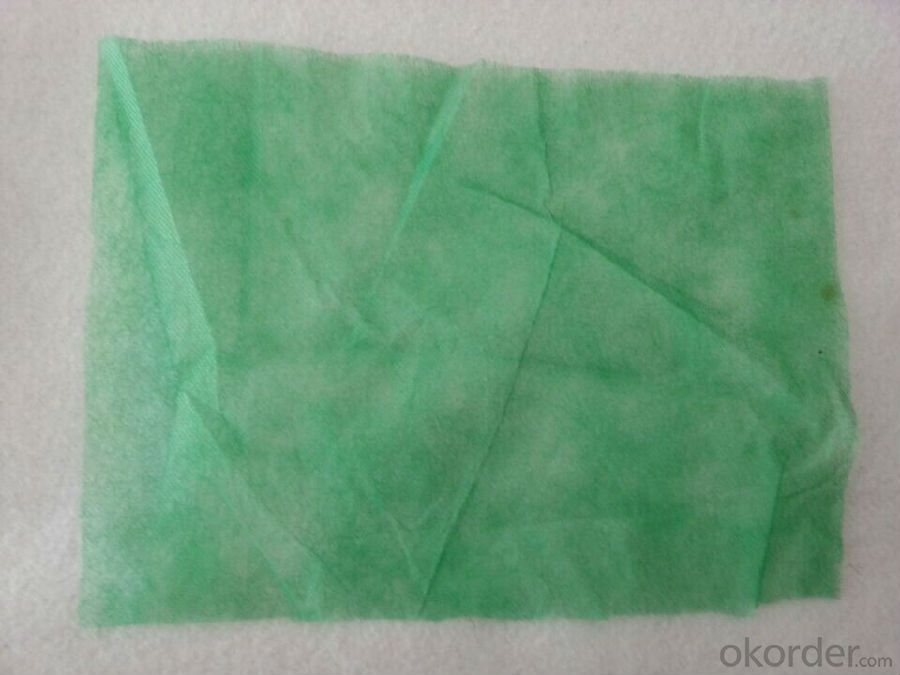
- Q:How do geotextiles contribute to soil stabilization?
- Geotextiles contribute to soil stabilization by providing a barrier that prevents soil erosion, increases soil strength, and improves overall stability.
- Q:Can geotextiles be used for erosion control in golf courses?
- Yes, geotextiles can be used for erosion control in golf courses. Geotextiles are permeable fabrics that can be installed to stabilize soil and prevent erosion by providing a barrier against water flow. They are commonly used in various landscaping applications, including golf course construction and maintenance, to control erosion and improve soil stability.
- Q:Geotextile and non-woven fabrics What is the difference
- Geotextile is divided into two non-woven geotextile and woven geotextile, non-woven geotextile and acupuncture and spunlace, staple fiber and long fiber. Nonwovens means that the manufacturing process does not require weaving. Geotextiles are used for geotechnical engineering. Geotextile is part of the textile does not require the manufacture can be made, called non-woven geotextile. Non-woven fabrics can be used very broad, like we use the heart of the soft wipes, are non-woven, as well as the hotel put the shoes of the shoes, but also non-woven.
- Q:Non-woven fabrics, geotextiles and geotextile geotextile
- The same material that I specialize in producing
- Q:Can geotextiles be used in road construction?
- Yes, geotextiles can be used in road construction. They are often used as a geosynthetic material to reinforce the soil and provide stability to the road base. Geotextiles can also act as a separation layer, preventing the mixing of different layers of soil or aggregate materials. Additionally, they can help in drainage by allowing water to pass through while preventing soil erosion. Overall, geotextiles are beneficial in enhancing the performance and longevity of roads.
- Q:Are geotextiles commonly used in civil engineering projects?
- Yes, geotextiles are commonly used in civil engineering projects. They are versatile materials that provide various functions such as soil stabilization, erosion control, filtration, and drainage. Geotextiles are used in a wide range of civil engineering applications including road construction, slope stabilization, landfill liners, and coastal protection. Their ability to enhance the performance and longevity of infrastructure makes them a popular choice in civil engineering projects.
- Q:Shield Machine Tool material which is the hardest
- The tool structure is divided into cutter body and blade (alloy). The blade is embedded in the conductor, used to cut the soil, so the blade material is very hard, generally mostly hard alloy (I contact are tungsten alloy), knife body material generally use 40 Luo. According to the definition of Japan, alloy E1 grade is the nearest, HRA greater than 90, bending greater than 1200. Materials are similar, but the heat treatment process is different from Japan to do a good piece.
- Q:How are geotextiles used in erosion control?
- Geotextiles are used in erosion control by providing a protective barrier against soil erosion. They are placed on the ground surface or buried within the soil to prevent or minimize the loss of soil particles due to water flow or wind. Geotextiles help stabilize the soil by improving its strength and reducing the movement of sediments, thus preventing erosion from occurring.
- Q:Can geotextiles be used in underground gas storage projects?
- Yes, geotextiles can be used in underground gas storage projects. Geotextiles are commonly used in these projects to provide separation, filtration, and drainage functions. They help to prevent soil erosion, control water flow, and provide stability to the project. Additionally, geotextiles can enhance the gas storage system's efficiency by improving the overall performance and integrity of the underground structure.
- Q:What are the different geotextile installation techniques in slope stabilization?
- There are several geotextile installation techniques used in slope stabilization, including slope face treatment, wrap-around technique, and anchor trenching. In slope face treatment, geotextiles are placed directly on the slope surface to prevent erosion and promote vegetation growth. The wrap-around technique involves installing geotextiles horizontally around the slope, creating a reinforced barrier against soil movement. Anchor trenching, on the other hand, involves burying geotextiles vertically into the slope to provide added stability and resistance against sliding. These techniques are commonly used in combination to ensure effective slope stabilization.
1. Manufacturer Overview |
|
|---|---|
| Location | |
| Year Established | |
| Annual Output Value | |
| Main Markets | |
| Company Certifications | |
2. Manufacturer Certificates |
|
|---|---|
| a) Certification Name | |
| Range | |
| Reference | |
| Validity Period | |
3. Manufacturer Capability |
|
|---|---|
| a)Trade Capacity | |
| Nearest Port | |
| Export Percentage | |
| No.of Employees in Trade Department | |
| Language Spoken: | |
| b)Factory Information | |
| Factory Size: | |
| No. of Production Lines | |
| Contract Manufacturing | |
| Product Price Range | |
Send your message to us
Staple fibers needle punched non woven geotextile
- Loading Port:
- Qingdao
- Payment Terms:
- TT or LC
- Min Order Qty:
- 1000 g/m²
- Supply Capability:
- 100000 g/m²/month
OKorder Service Pledge
OKorder Financial Service
Similar products
New products
Hot products
Hot Searches
Related keywords
